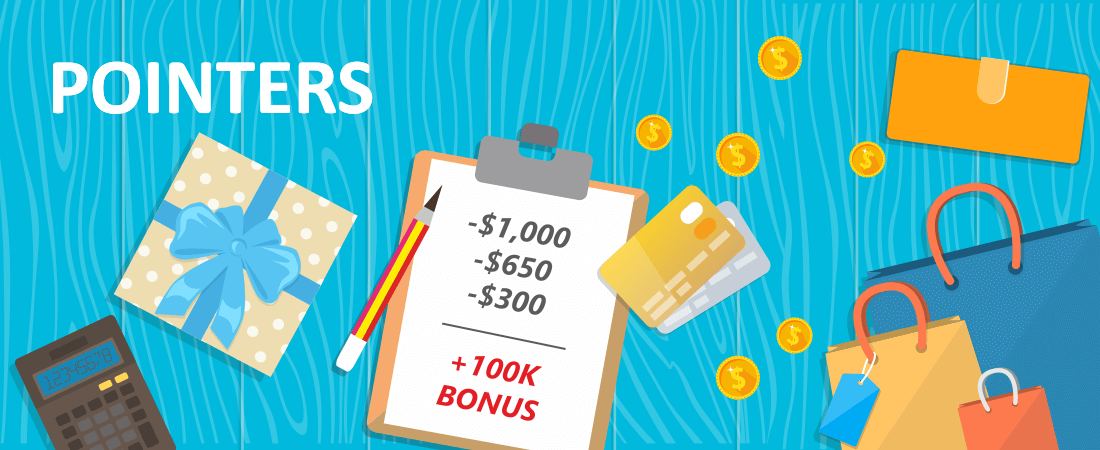Your credit score is the key to so many important decisions in your life. Landing a job. Renting an apartment or buying a home. Getting insurance. And, for those of us who love to travel, being approved for the premium credit cards we love so much. But, what happens if your credit score needs some help? Here are the best ways that I know to improve your credit health and your credit score.
What Makes Up Your Credit Score?
Your credit score is a combination of factors that banks and companies use to determine if they should trust you. The trust comes across in many ways. Your score will help others determine if they should lend you money, how much your insurance will be, if you should get an apartment or even if you would make a trustworthy employee.
Having a better credit score will easily improve your overall financial well-being.
Below are the key ingredients that make up your credit score. These pieces are not treated equally, with some weighing more heavily into the calculation.
- 35% payment history
- 30% amounts owed
- 15% length of credit history
- 10% new credit
- 10% types of credit used
How Is Your Credit Score Determined?
Your daily activities and how you treat your credit play a big role in determining your credit score. Some negatives can be erased rather quickly (i.e., paying off a credit card), while others will take time to fall off your credit report (i.e., late payment, chargeoff or bankruptcy).
Payment History
Payment history measures if you can pay your bills on time. If you make a late payment, miss a billing cycle or, worst of all, have a chargeoff, that will negatively impact this number.
Amounts Owed
The amounts owed is otherwise known as credit utilization. To calculate this number, focus on credit cards and lines of credit, and ignore the others. Take the balances you owe on your credit cards and lines of credit, then divide that sum by the total of all the credit limits on your credit cards and lines of credit.
Ideally, credit utilization should be below 30%. The lower you can make this number, the better your score will be.
Length of Credit History
Lenders want to know that you know how to use credit over a period of time. And they like to see a long history of you being able to make bill payments on time.
The longer you keep loans and credit cards open, the more this will raise your average age of credit. This is why I like to keep some no annual fee credit cards open, even if I choose not to use them while I focus on earning rewards.
New Credit
New credit is the measure of how often you are applying for new loans or credit cards. Whenever there is a new inquiry on your credit report, you’ll experience a small drop of a few points in your score. The more inquiries you have in a short period of time, the larger the drop will be.
If you are applying for a mortgage or a car loan, the credit bureaus understand that you may be shopping around with several inquiries happening in close proximity. The bureaus will combine the inquiries so that you only have a small decline in your score instead of something bigger.
Types of Credit Used
The credit bureaus reward people who have a balanced credit report. They want to see a mix of mortgages, term loans and credit cards. Unfortunately, this can penalize some people.
For instance, I have been really focused on paying off my debts for the last few years. Within a year, I finished paying off my car loan, and I paid off my student loans nine years early.
That’s a good thing, right? Not to the credit bureaus. My score actually dropped a little bit! And now the notes on my online credit reports indicate my score is lower because of the lack of diversity on my report.
In plain English, they’re telling me I should take out a loan if I want my credit score to go up. Luckily, my score is high enough to get approved for loans and the best credit cards, so I won’t be borrowing money just to increase my score.
What Is a Good Credit Score?
This may seem straightforward, but it can be a little confusing. Credit score ranges vary slightly depending on the reporting company. We’ve put together a guide detailing the differences.
FICO is one of the most popular scores, and a good FICO score is 670 or better. An excellent score, which should be your ultimate goal since it will give you access to the best loan rates and credit cards, is 710+.
How to Improve Your Credit Score
Here are five things you might not know about your credit score. If you’re looking to get a better number, here are the best ways I know to increase your credit score and fix your credit.
Pay Down Your Credit Card Balances
As we talked about above, the more you can decrease your credit utilization, the higher your score will go. Don’t just look at the total either. Look at each individual card.
Say you have two cards with $5,000 limits each, with one at $0 and the other with a $4,000 balance. Consider moving part of the balance over to your other card. Your score should be better if you have two cards with $2,000 each vs. one with $0 and the other with $4,000.
If you don’t have enough available credit, consider our list of the best balance transfer credit cards.
Get a Debt Consolidation Loan
Another way to pay off those credit card balances is to shift the balance from a credit card to a credit builder loan that will pay off the debt in a few years. Just make sure that you don’t spend more on the cards and rack up more debt.
Apply for a New Credit Card
Although this may sound counterintuitive, when you apply for a new credit card, your score will go up over the next six months. As the credit card company reports your positive payment history and new credit availability, this will add positive marks to your credit report. And opening a new credit account will help lower your utilization, which will raise your credit score.
Switch Your Spending to a Charge Card
Credit cards and charge cards are not the same, even though the look identical in your wallet. Credit cards have a predefined credit limit, allow you to carry a balance from month-to-month and only require a minimum payment of 2% to 3% each month.
Charge cards theoretically have no limit, but they require you to pay your balance in full each month.
Because charge cards report no limit and must be paid in full, they are treated differently for scoring purposes. One of our experts here at RewardExpert recently switched all of his spending to his American Express Platinum card and saw a 50 point increase in his credit score within two months.
Close Your Newest Cards
Fifteen percent of your credit report is based on credit history. Ideally, your average age will be at least 5 years (and preferably over 10 years). If you’re close to either of these, consider closing one or more of your newest cards to increase the average age of your credit card accounts.
Before you close the card, ask the bank to transfer the credit limit to one of your cards that you’ll be keeping. You don’t want to lose that available credit and increase your credit utilization ratio. You could end up harming your credit score.
Give It Time
Credit inquiries and bad marks stay on your credit for a period of time. There’s little you can do about it except wait. Credit inquiries will lower your score for 6 to 12 months and will remain on your report for up to two years.
Bad marks can take years to fall off your report, but they will fall off eventually. If you have an account in collection and it is close to falling off your report, do not make a payment to them. Any payment you make, even $1, will restart the clock for how long it can stay on your report.
Best Credit Cards for People With Bad Credit or a Limited Credit History
We’ve assembled a list of the best credit cards for people with bad credit or a limited credit history. Although they aren’t packed with benefits like some cards, they do offer a path to help restore your positive credit history and build your credit.
A secured credit card is another option. These cards require you make a deposit in a bank account, and the bank will give you a credit card with a line of credit equal to your deposit. In some cases, the credit limit could even be higher. It’s not ideal, but these cards can help you repair your credit.
Your Next Steps to Improve Your Credit Score
The first step is to take an inventory of your current situation. Make a list of all of your credit cards and loans, the balance, payment amount and credit limit. An easy way to get all of this information is to check your credit report.
You can get your credit score for free from Discover. You don’t even have to have a Discover card. This isn’t just a free annual credit report, it comes monthly.
Now, look at the credit cards you have and think about which ones you can pay off quickly. Consider a debt consolidation loan or a 0% balance transfer card. And then put your plan into action and your credit score will be moving in the right direction in no time.






